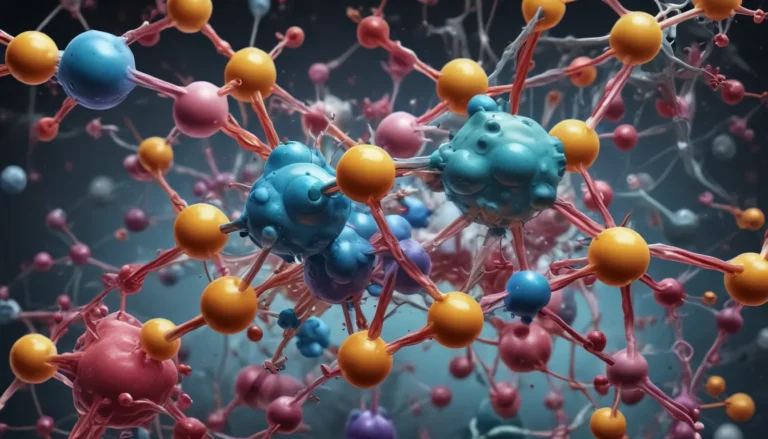A Note About Images: The images used in our articles are for illustration purposes only and may not exactly match the content. They are meant to engage readers, but the text should be relied upon for accurate information.
Photoemission, also known as the photoelectric effect, is a captivating phenomenon in the realm of physics that has revolutionized our comprehension of light and matter. First discovered by Heinrich Hertz in 1887 and later elucidated by Albert Einstein in 1905, photoemission involves the emission of electrons from a material surface when exposed to light or other forms of electromagnetic radiation. In this article, we will embark on a journey through the captivating world of photoemission, unraveling 15 astounding facts that will enrich your knowledge and appreciation for this extraordinary scientific concept.
Key Insights into Photoemission:
- Photoemission: Photoemission, the process of emitting electrons from a material when exposed to light, is pivotal in various applications such as solar cells and electron microscopy. It has significantly contributed to the development of quantum mechanics and surface science. Controlling the energy of photoemitted electrons through light filters has led to advancements in surface science and quantum cryptography.
The Intriguing Phenomenon of Photoemission
Dissecting Photoemission: The photoelectric effect, or photoemission, occurs when photons of light interact with a material’s surface, transferring sufficient energy to electrons, causing them to overcome their binding forces.
Foundation of Quantum Mechanics: The discovery of photoemission played a vital role in elucidating the particle-wave duality of light and electrons, challenging classical wave theory and paving the way for the development of quantum mechanics.
Solar Energy Applications: Solar cells capitalize on photoemission to convert sunlight into electricity by causing the emission of electrons when photons strike the cell’s surface.
Work Function Relationship: The ease of photoemission is connected to a material’s work function, the minimum energy required to remove an electron from its surface. Lower work functions lead to more efficient photoemission.
Further Exploration into Photoemission
Material Diversity: While photoemission was initially observed in metals due to their low work functions, it was later discovered to occur in various materials, including semiconductors and insulators.
Energy Level Determination: Photoemission aids in determining energy levels in materials by analyzing the energies of emitted electrons, offering critical insights into electronic structures.
Impact of Incident Light: The intensity of incident light directly influences the number of photoemitted electrons, with higher intensity light resulting in more emissions.
Prompt Response: The photoemission process occurs nearly instantly, on the order of femtoseconds, facilitating efficient electron capture and utilization.
Delving Deeper into the Applications and Implications of Photoemission
Light Wavelength Variability: Different light wavelengths possess varying abilities to induce photoemission, with the most efficient emission occurring when light matches the energy gap between bound and unbound electron states.
Historical Skepticism: The initial proposal of the photoelectric effect faced skepticism, challenging the traditional wave theory of light and electrons as particles.
Electron Microscopy Utilization: Techniques like photoemission electron microscopy (PEEM) and scanning tunneling microscopy (STM) rely on photoemission for high-resolution imaging at the nanoscale.
Energy Control with Light Filters: Selectively filtering incident light enables the manipulation of emitted electron energy distributions, crucial for applications like photoemission spectroscopy.
Advancements and Implications of Photoemission in Diverse Fields
Surface Science and Catalyst Development: Photoemission has been instrumental in advancing surface science, leading to improvements in catalysts, sensors, and electronic devices.
Quantum Cryptography Integration: The principles of photoemission have found applications in quantum cryptography, ensuring secure information transmission through the detection of individual photons.
Diverse Light Sources: While commonly associated with visible light, photoemission can also be induced by ultraviolet and X-rays due to their higher energies.
Unveiling these 15 astounding facts about photoemission showcases the profound significance and wide-ranging applications of this remarkable phenomenon. From its foundational role in quantum mechanics to its practical utilization in solar cells and electron microscopy, photoemission continues to shape our understanding of light and matter.
Embracing the Fascinating World of Photoemission
The captivating link between photoemission and quantum mechanics signifies just the beginning of a journey filled with scientific exploration and discovery. Dive deeper into the realms of material science, spectroscopy, and quantum physics, and uncover the mind-bending concepts that challenge our perception of reality itself. The future of photoemission research holds tremendous promise in advancing our knowledge of fundamental physics and unveiling groundbreaking technologies that may revolutionize quantum computing, advanced materials, and clean energy sources.
Frequently Asked Questions
-
What is photoemission?
Photoemission refers to the emission of electrons from a material’s surface when exposed to light or electromagnetic radiation. -
What is the photoelectric effect?
The photoelectric effect entails the emission of electrons from a material’s surface upon illumination by light of specific frequency or above a threshold energy. -
How does photoemission contribute to solar energy?
Photoemission plays a vital role in generating electricity in photovoltaic cells by releasing electrons when light interacts with a semiconductor material. -
What are energy bands in solids?
Energy bands in solids encompass the distribution of permitted energy states for electrons within a material, often studied through photoemission spectroscopy. -
How is photoemission utilized in electron microscopy?
Techniques like PEEM leverage photoemission to create detailed surface images at the nanoscale, offering insights into material structure and composition. -
What are the future prospects of photoemission research?
The future of photoemission research holds immense potential in advancing fundamental physics understanding, developing new technologies, and driving innovations in quantum computing and clean energy.
Embark on a voyage of scientific discovery with us, as we unravel the wondrous world of photoemission and its profound impacts on modern science and technology. Explore the intricate workings of this phenomenon and witness the awe-inspiring applications that continue to shape the forefront of physics and innovation. Discover the beauty of light and matter through the lens of photoemission, where endless possibilities await.






